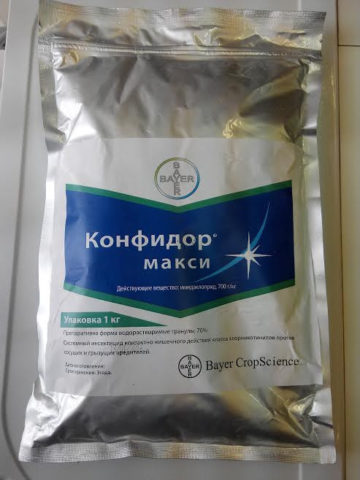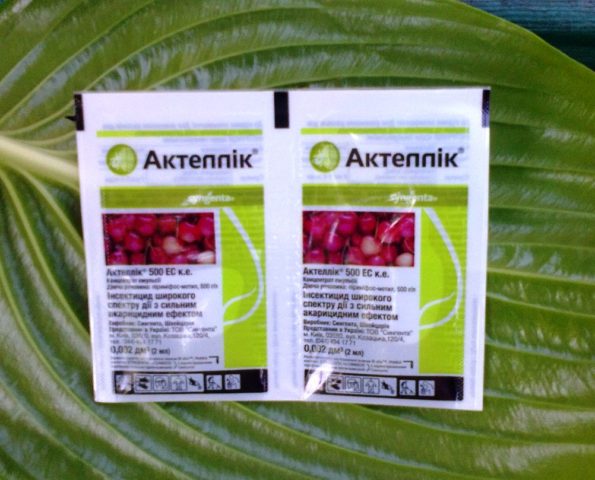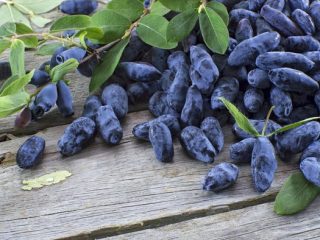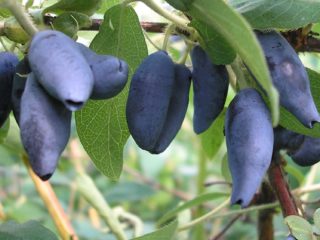Content [скрыть]
If the leaves of honeysuckle turn yellow in the summer, this is an alarming sign to look out for. The plant is used in garden plots to decorate flower beds. If a shrub turns yellow prematurely and leaves fall off, this can ruin the entire landscape. The main reasons why the leaves turn yellow on honeysuckle, and how to fix the problem, are described below.
Why do honeysuckle leaves turn yellow?
Honeysuckle leaves turn yellow for various reasons.
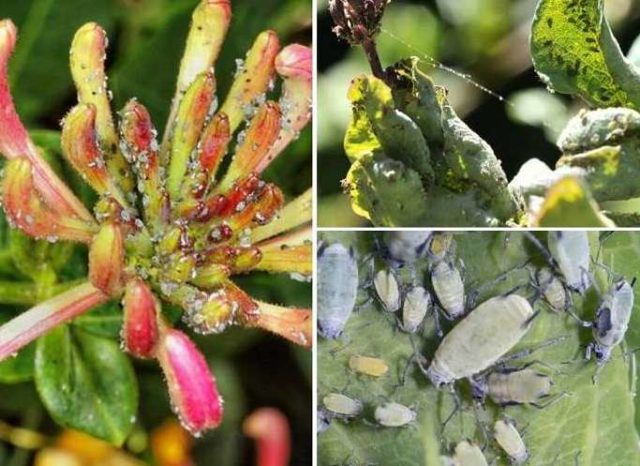
This can be improper planting, excessive or insufficient watering, lack of nutrients in the soil, the appearance of insects - pests, all kinds of diseases
Loam and sandy loam are suitable for planting it. If you plant a crop in acidic soil, it can react with the appearance of yellow leaves. If it is known that the acidity of the soil is increased on the site, before planting the honeysuckle, you should prepare the soil mixture by adding lime to it.
On honeysuckle, planted in the shade, leaves curl and turn yellow from a lack of ultraviolet radiation. Before planting a shrub, a suitable site should be selected. It should be open, only large animals can grow in the neighborhood, giving little shading.
When landing, you should follow some rules:
- transplanting a seedling must be carried out in early spring, before the buds swell, otherwise the bush will hurt all summer;
- leave at least 1.2 m between plants. This distance is necessary for the normal development of shoots. With thickening, favorable conditions are created for the development of diseases that can cause yellowing, twisting and falling foliage.
Common Causes of Yellow Leaves in Honeysuckle
If the honeysuckle is planted according to all the rules, it is watered in a timely manner and periodically fed, then the cause of the sudden appearance of yellow leaves may be diseases or pests.
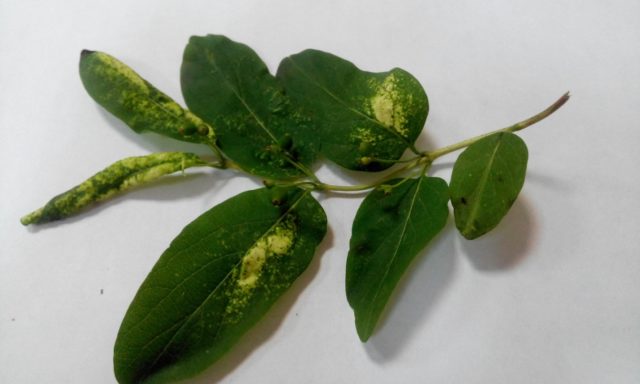
The most common cause of yellow foliage is green honeysuckle aphid.
The plant undergoes the first attack in early June, the second brood appears in July. Aphids feed on plant sap, sucking it out of leaves and shoots. The foliage turns yellow, curls and falls off prematurely, the shoots stop growing, the general condition of the seedling worsens. Without timely treatment, the plant may die.
Red-olive spotting is accompanied by the appearance of yellowish-red spots on the leaves, gradually acquiring a brownish tint.

Foliage begins to turn yellow, dry and fall off
The mottling of honeysuckle leaves is caused by soil nematodes. The natural coloring of the crown changes, yellowish-white streaks and spots appear on the leaf plates.
The appearance of winding stripes with a dried and yellowed surface warns of the appearance of miner fly larvae.
The emerging larvae make passages inside, which interferes with the normal process of photosynthesis and worsens the condition of the shrub, slowing down its growth.
Gall nematode is a microscopic worm that sucks juices from roots and promotes the penetration of fungal and bacterial infections into damaged areas. If the root system is damaged, foliage may turn yellow and fall off prematurely.
The appearance of the root knot nematode leads to the development of the rhesus mosaic virus.This disease is characterized by uncontrolled growth of lateral shoots. The leaves stop developing, begin to dry out and fall off, the plants also wither and die.
What to do if honeysuckle leaves turn yellow
When the first yellowed leaves appear, it is necessary to find out the reason. To do this, carefully examine the leaf plate, shoots. If there are no external signs of disease or the presence of insects on the honeysuckle, it is necessary to analyze other factors in which the leaves turn yellow.
Inspecting the planting site and conducting a soil acidity test will help identify the cause of the yellow foliage on the honeysuckle. If the shrub is planted in the shade, it is best to transplant it to an open area. The procedure is carried out in early spring or autumn, after the leaves have fallen off. It is advisable that at least 1 month remains before the first frost.
The yellowing of the leaves in honeysuckle is not always associated with disease, it is possible that the plant suffers from a lack of nutrients. To help the shrub, it needs to be treated with special preparations, for example, Florist, Uniflor-micro and others. You can use top dressing containing urea, humate. The foliar procedure is carried out in the summer, the introduction of organic matter in the spring, and in the fall it is recommended to fertilize with wood ash.
Honeysuckle needs regular watering, but if the soil is waterlogged, its roots may suffer. In regions with a temperate climate, it is enough to water 3-4 times per season. During severe drought, the amount of watering can be increased. Each hole will require 10 liters of warm water. Watering the bushes in the evening. So that the moisture does not evaporate too much, the trunks are mulched with improvised materials (wood sawdust, peat, freshly cut grass).
If pests are seen on the foliage, the honeysuckle bushes are treated with insecticides. The following are recognized as effective drugs:
- Confidor;
- Aktara;
- Actellic.
Processing is also carried out in the spring (for prevention purposes).
Experienced gardening tips
Honeysuckle is not only an ornamental but also a high-yielding shrub. In order not to encounter yellowing of foliage and a deterioration in yield, it is necessary to carry out preventive measures.
Leaves can turn yellow from lack of nutrition. The seedlings are fed in the third year after planting. In early spring, mineral fertilizers (20 g) and manure (5 kg) are applied. Before flowering, Kemira's drug is used, it is dissolved in water at the rate of 20 g per 10 liters.
To prevent the culture from starting to turn yellow, foliar feeding is practiced in the summer. Spraying is carried out in the evening or in cloudy but not rainy weather. For spraying, you need: urea (0.1%), potassium chloride (0.5%) and superphosphate (1%).
In autumn, the land is treated with wood ash. For 1 sq. m of the trunk circle will require 200 g of ash.
When yellow leaves appear on the bushes, they are plucked, dried and damaged shoots are cut and burned away from the site.
Conclusion
If the leaves of the honeysuckle turn yellow, a careful inspection of the plant is necessary. The correct diagnosis allows you to timely help the bush and save it from death.
